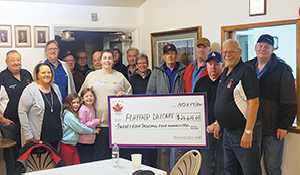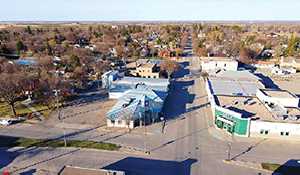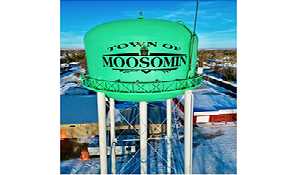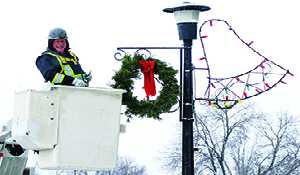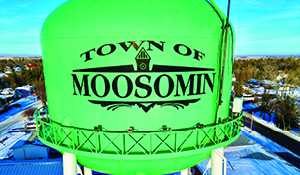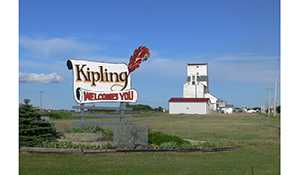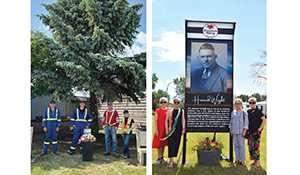SGI returning $350 million to customers
March 1, 2021, 11:36 am
Spencer Kemp, Local Journalism Initiative Reporter
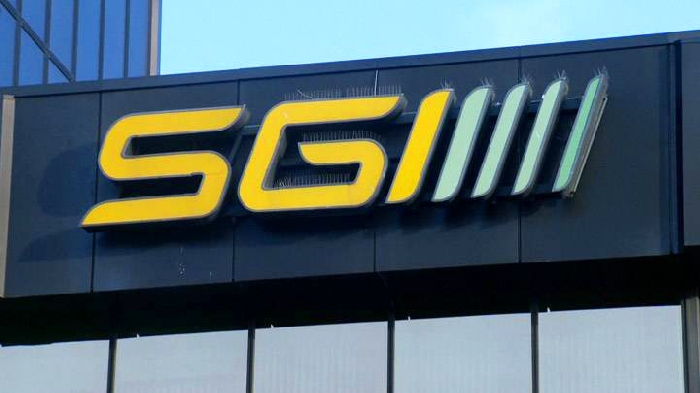

Saskatchewan Government Insurance will pass on roughly $350 million in earnings to the people of Saskatchewan by issuing one-time rebates to all registered vehicle owners, and also improving injury benefits for its most seriously injured customers.
The provincial Crown corporation has a strong balance sheet due to a number of factors, including fewer collision claims due to the Covid-19 pandemic.
“The Saskatchewan Auto Fund Rate Stabilization Reserve is in a very strong financial position due to very strong investment returns and – to a smaller degree–fewer collision claims due to the COVID-19 pandemic,” Minister Responsible for SGI Don Morgan said.
“As a result, SGI will pass on these earnings to the people of Saskatchewan by issuing rebates to all registered vehicle owners and by improving injury benefits.”
Rebates to be issued to vehicle owners this spring
The provincial government has approved the one-time rebate of $285 million. The amount each customer receives will vary, and it will be calculated based on a proportion of vehicle premiums paid in the previous three years. Details are still being finalized, but it’s expected the average rebate will work out to approximately $285 per vehicle or approximately 26 per cent of an average annual premium in Saskatchewan.
The Auto Fund, which all Saskatchewan vehicle owners pay into via their insurance premiums, maintains the Rate Stabilization Reserve (RSR). Maintaining a healthy balance in the RSR protects customers against sudden rate fluctuations due to unexpected cost pressures. The RSR is one of the reasons that SGI customers enjoy, on average, the lowest rates for basic auto insurance in Canada and have not experienced significant rate increases, despite the rapidly rising cost of repairing today’s modern vehicles.
The amount in the RSR is heavily impacted by the performance of its well-diversified investment portfolio. After losses last March, in the early days of the COVID-19 pandemic, the RSR experienced strong investment earnings over the past fiscal year, especially in the last quarter. This allows SGI to absorb the one-time cost associated with issuing rebates, while remaining in a position to protect customers from significant rate hikes going forward. Even with issuing the rebate, the RSR will meet industry standards to protect against unexpected cost fluctuations.
Rebate cheques will be issued in May and sent through the mail to customers who have paid Auto Fund premiums in the past three years and are residents of Saskatchewan. Customers are encouraged to verify that their mailing address is up to date by visiting www.MySGI.ca to confirm or by contacting their local motor licence issuer.
Enhanced benefits for most seriously injured customers
SGI is also implementing two significant enhancements for customers who receive long-term injury benefits as a result of being injured in vehicle collisions.
Customers who require assistance with daily tasks (i.e., dressing, bathing, cooking, cleaning and yard care) will see the maximum payments for those services increase to better reflect current market rates. This is expected to benefit more than 1,100 SGI customers.
SGI customers who receive income replacement benefits from SGI and Canada Pension Plan (CPP) will no longer have income benefits from SGI reduced by their CPP payment. It is standard industry practice to reduce insurance benefits by the CPP payment. SGI is leading the industry by eliminating this practice, to the added benefit of our most seriously injured customers. It is estimated that this will benefit approximately 200 people.
The World-Spectators Spencer Kemp reached out to SGI Chief Financial Officer Jeff Stepan to answer some questions about the rebate.
SGI is distributing roughly $350 million to Saskatchewan residents. Are these earnings brought on by a surplus?
“It’s really a surplus that has built up over the last three years. We need to keep a reserve and we call it the Rate Stabilization Reserve. We need to keep it to make sure we have sufficient money to pay claims, plus we want to have a buffer so that if we have a bad storm season we don’t have to jack up rates.
What’s happened over the last few years and particularly the last year we’ve had very strong investment earnings that have boosted that reserve above what’s required. We’ve also had lower insurance claims because of the pandemic. Fewer cars on the road mean fewer claims.
That combination has put us in a position where we have excess capital that can be refunded back to the people of Saskatchewan.”
Why did SGI choose to do a rebate instead of reinvesting the money?
“The auto fund is managed on a break-even basis. Any money that comes in is used to pay claims or pay administrative costs. Because of that, all the money just stays within the auto fund. The only real option was to keep building up our capital and it just made more sense to pass that back on to the people of Saskatchewan.”
Why now?
“The position that we’re in now allowed us to do this. The two ways that we could have effectively reduced the capital is we could have lowered rates and people would have had lower rates going forward for the next few years or we could have done this rebate.
The rebate, given the pandemic and situation we are in economically, it was decided that this was the best option to get cash in people’s hands when they need it the most.
The rebate option was chosen, and when we look at our year-to-date results we were in a position where we could afford it and still be prudent about it. We’re still sitting with a capital that is just above our target.”
How are the rebates determined per vehicle?
“What we’re doing is looking at the last three years of premiums that individuals have paid. Then we’re going to add up the premiums the customers have paid and an individual customer’s portion of that amount is going to be applied to the available funds.
So if you have a higher-cost vehicle to insure, then you are going to be getting a bigger rebate than somebody who has not put as much into insurance premiums.”
What is the full range of the rebates?
“It really varies. Some people might have only registered a vehicle for a portion of a year, which would mean they would get a very small rebate. But then there are some people and some companies that have fleets of vehicles that would be getting a fairly substantial rebate.
It’s hard to say what the minimum and maximum would be. We haven’t run all of the numbers yet, so we don’t have that information.”
Will the funding be available for both commercial and personal vehicles?
“It’s available for all vehicles. So commercial, personal, trailers, and any kind of vehicle that was registered with the auto fund.”
What is the eligibility for the rebate?
“You have to be a resident of Saskatchewan. So even if you have paid premiums but have moved out of the province, then you are not eligible.
If you have money owing to the auto fund, then what we’re going to do is net the rebate against the amount owing. If you owe $200 but get a rebate of $285, what you would get is a cheque for $85 instead.”
How are payments received?
“They’re going to receive a cheque in the mail. There is nothing they need to do. We will be mailing out cheques. The one thing that we ask people to do is to make sure they have their current address on file. They can do that through MySGI or ExpressAddress. Just make sure the address is current on file and they will receive a cheque in may.”




















